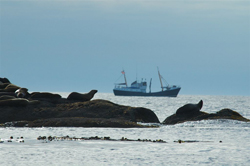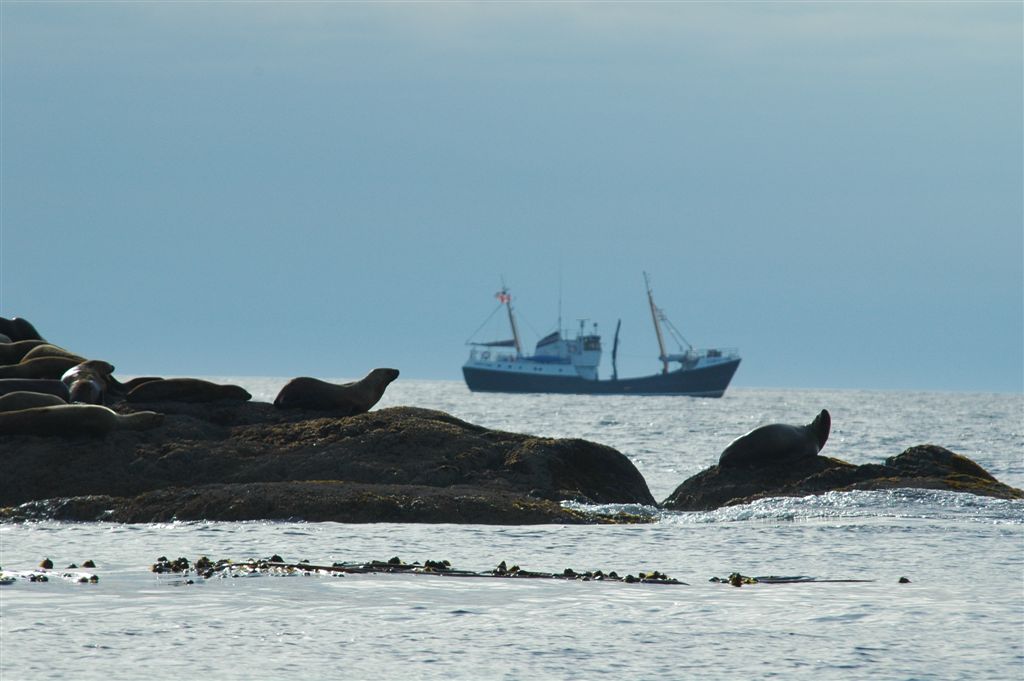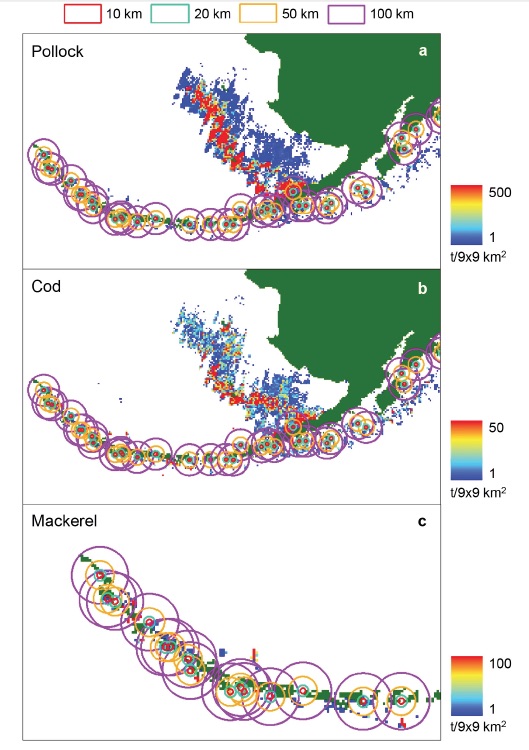
Are Steller sea lion populations affected by commercial fishing?
Scientists have proposed a number of possible explanations behind the mysterious decline of Steller sea lions in Western Alaska since the 1970s. One of the more controversial possibilities is that intense commercial fishing has reduced the amount of fish available to Steller sea lions. In ecological terms, this is called competition. Yet no scientific study has shown that competition with commercial fisheries is responsible for the alarming decline in sea lion populations.

Do Steller sea lions co-exist or compete with fisheries? It is a perplexing question that is not easily answered.
In an ambitious new study, Consortium researchers explored the complex relationships between sea lion population trends, fishery catches, and the estimated amount of fish available to sea lions. The researchers compiled and analyzed an astonishing array of data from 2000-2008 that focused on 33 sea lion rookeries in Alaska and three key fish species important to both sea lions and humans. The study was published in the journal PLoS ONE.
Conservation vs. Catch
“This is a topic that people feel very strongly about,” says Tabitha Hui, the lead author of the study, who completed the work as her Master’s thesis at the University of British Columbia. “The three fish species we studied are the three biggest fisheries in Alaska, worth millions of dollars every year, so the stakes were high.”
Hui and her collaborators created a number of very high-resolution ecosystem models to study the interactions between sea lion populations, commercial fisheries and the fish stocks. They identified only three significant relationships in over 300 simulations, and found no evidence that commercial fisheries have had a strong impact on sea lion populations during this time period (2000-2008).

Annual catches in tons per 9×9 km2 of (a) walleye pollock (2003), (b) Pacific cod (2002) and (c) Atka mackerel (2004). Total amounts of fish removed by fisheries within 10, 20, 50 and 100 km of each sea lion rookery (red, cyan, orange and purple rings respectively) were calculated by summing the total biomass of catches within each of the
respective rings. (From Hui et al. 2015)
“The most novel aspect of our study is the accessibility model we built to determine the availability of fish for Steller sea lions,” Hui says. “There have been plenty of studies on Steller sea lion behavior and a lot of detail on dive profiles, but nobody has taken the movement data and linked it to foraging efficiency and the accessibility of fish to sea lions. Up until now, the calculations have been based on an assumption that, ‘this area has this many fish, and one sea lion eats so many fish per day for a year,’ to produce a general estimate of foraging efficiency.”
Despite the study’s innovative and rigorous methods, Hui is cautious about drawing definitive conclusions because of the limitations of her data, which were affected by a significant change in fisheries policy in 2000.
“I only had fish biomass data for alternate years from 2000-2004, which restricted the prey fields I could build,” she notes. “From 2000 onward, commercial fishers were not permitted to fish within 20 nautical miles of any sea lion rookery. Sea lions tend to forage close to home, so this policy change effectively removed the potential for any competition to occur between humans and sea lions for the same fish whether or not it had ever occurred. As a result, our data didn’t show much difference between a fishing scenario and a no-fishing scenario. Prior to 2000, the argument is that there was a lot more commercial fishing, which could have begun the sea lion decline. The decline started in the late 1970s, but we don’t have much data on those two decades.”
Prudent policy
Over the course of her research, Hui has engaged stakeholders in all sides of the debate, from commercial fishers to conservationists to consumers.
“Our results show that the current regulations appear to be working—that fishing beyond 20 nautical miles from a rookery does not seem to be impacting sea lions,” she says.
Hui believes a monitoring program should be an essential part of any effort to change the current fishing regulations. She also believes that if restrictions are reduced, they should be reduced incrementally over several years so that any impacts that might occur can be closely monitored.
“Competition for resources is an important issue,” she says. “We need to find a balance between using and conserving our natural resources, and it’s a very difficult balance to calculate. That’s the attraction for me—the importance and the difficulty of the research.”
 PUBLICATION
PUBLICATION
[webref_bio title=”Assessment of competition between fisheries and Steller sea lions in Alaska based on estimated prey biomass, fisheries removals and predator foraging behaviour”]
